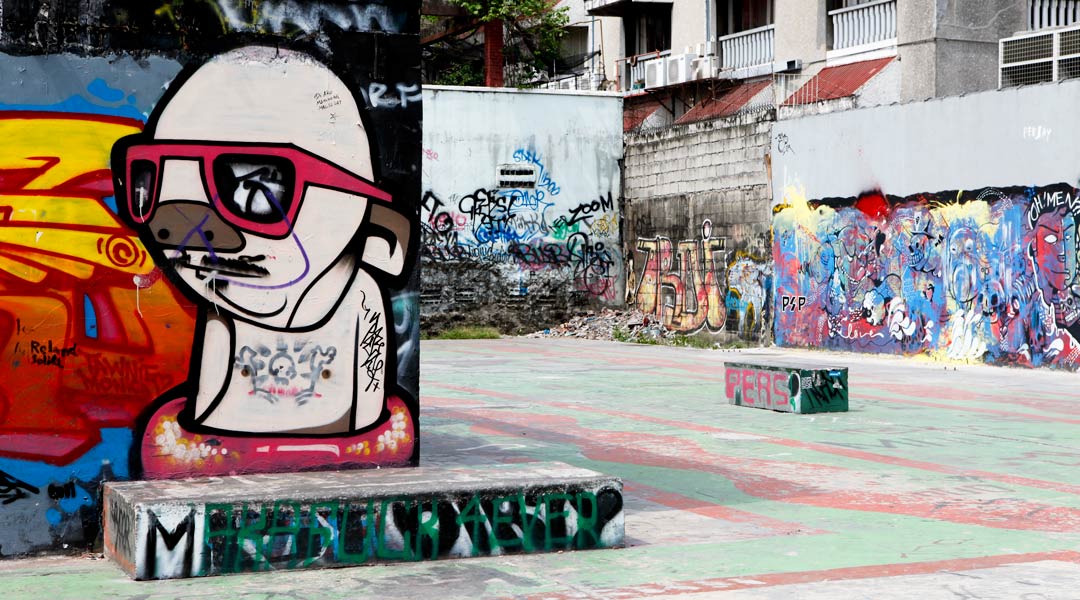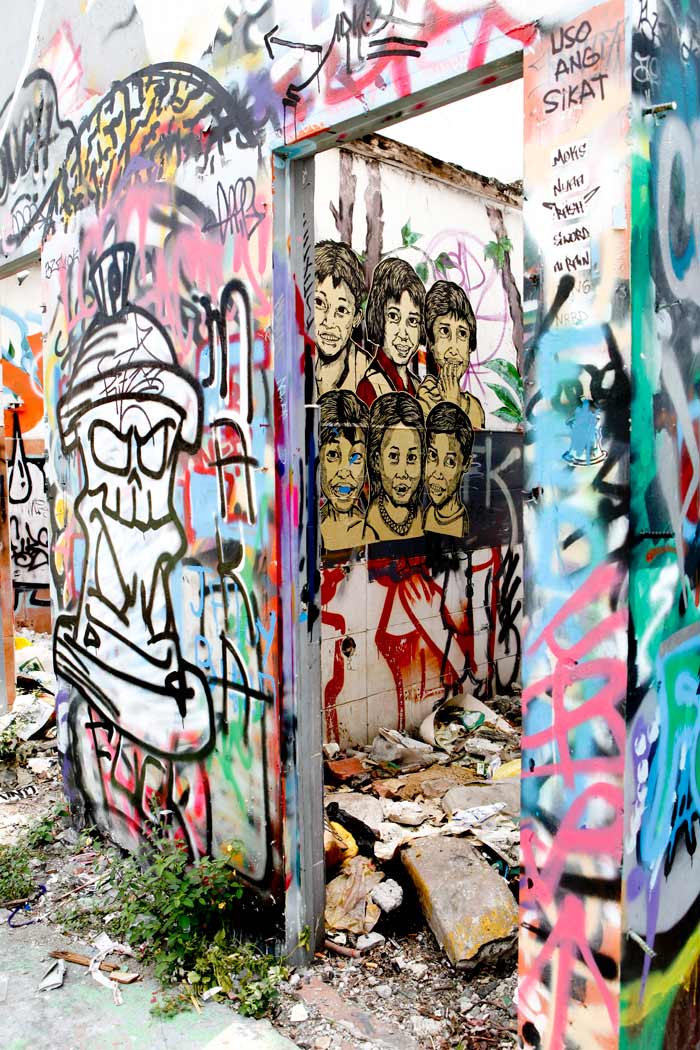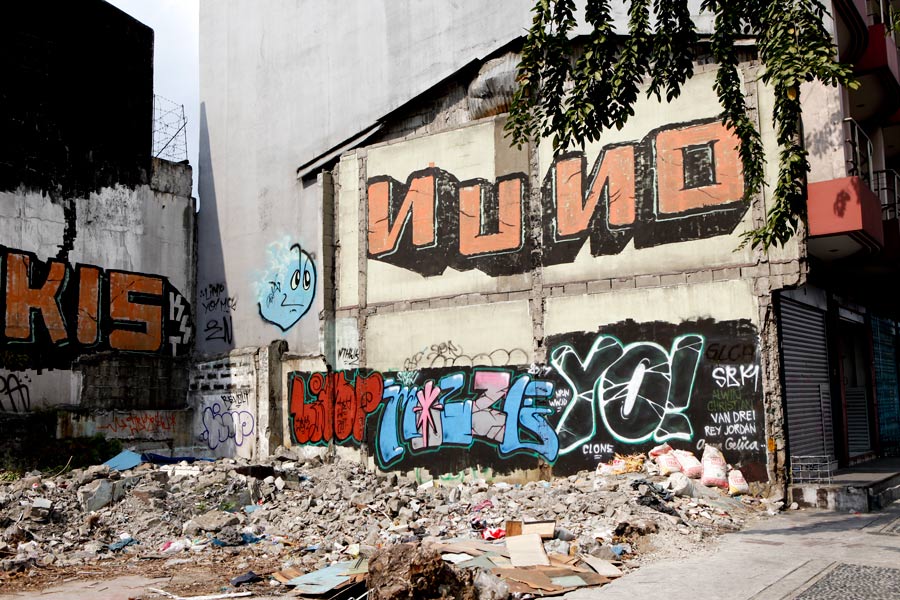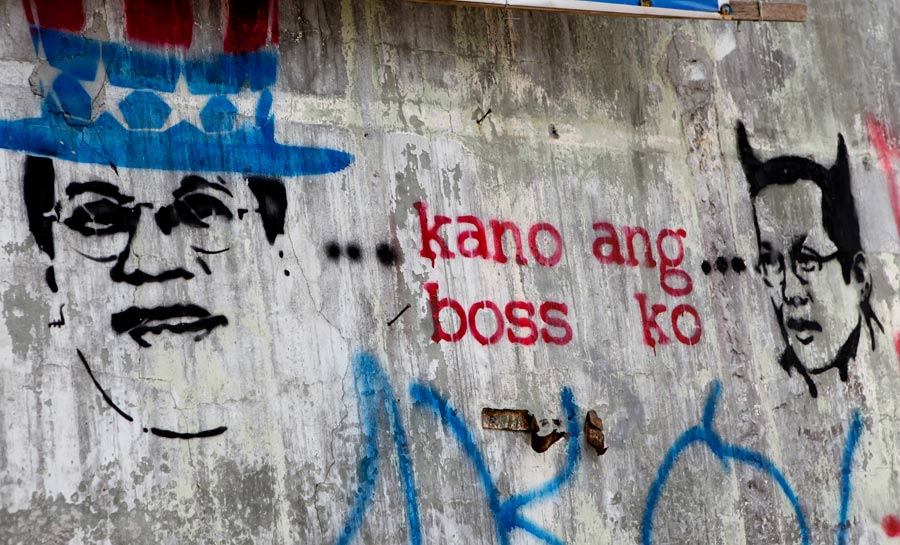
The Manila street art scene from sidewalks to galleries
Married, with kids: I used to think these things constituted being a “grown up,” but the deeper I get into this quicksand called maturity, the more subjective the term seems. There’s always a new experience that makes me sit up a little straighter, tuck my hair behind an ear, and cock a shoulder forward to feign weathered ease. Something that pushes me to turn off my playful slang speak, and use words that “adults” use, like vicissitudes, when all I really want to say is “yo, things change”(that example is borrowed from something that happened today).

Two things occurred recently that set me off on another one of these existential tangents. The first was finding myself discussing politics at a dinner party (egad), and the second, well, this one still makes me giddy: I put a bid in to purchase my first piece of art.
It made me feel more things than an entire afternoon worth of national artists at a museum. It spoke to me louder than any exhibit I’ve been to at the Guggenheim. It was a collaboration of a creation, by French graffiti artist Tilt and Manila’s own Egg Fiasco.
The sun is blaring, traffic is its uncooperative self, and Egg is pointing at a fire escape on a building, telling me that that is where he and his friends used to sneak out and smoke cigarettes back in his school days. We’re on Recto. It’s my first time. And if there’s any reason for me to be traipsing about Manila with a guy I’ve just met, it would be because I’m very much like you, perhaps—a curious cat, with much to learn.
In this case, we’re on a tour around the city, singling out Manila’s graffiti hot spots, as I embark on a quest to understand what it is about street art that is so riveting (not to mention that I have some preconceived notions that I want clarified and some questions to be answered).
READ MORE: How an act of resistance reinvented the Western Bicutan Tenement


Egg is my tour guide.
Egg is also obviously not his real name.
Barely a week prior, I was with some of his colleagues at the Lopez Museum—hardly the place I’d expected to find a street art installation, but lo and behold, Manila does surprise me every now and then. His colleagues, visual artists whom society throws in the same pot as “hooligans” and “delinquents,” are in real life college professors, advertising accounts executives, graphic designers and the like.
Perhaps it for this specific reason that they all have pseudonyms, be they graffiti artists or street artists; the difference in the two lying in the medium and style of expression. Graffiti generally constitutes spray painted “writing” or “characters” on walls, while street art is an amalgamation of forms of stickers, installations, stencils, collages, and a wide array of clever and strategic visual play where the public eye can chance upon them.


But what is it that compels many of these individuals, trained in the fine arts, to hit the streets?
“The primary difference between fine art and doing a piece on a wall is that the wall is bigger. This means people are more inclined to become engaged in the artwork, and because it is free and on public walls, more people are able to experience it. On top of this, you don’t know if it will be there tomorrow, so there’s the ephemeral aspect of it, unlike art that has market value and a place in a gallery”, says Wes, a warm and approachable fellow (who also happens to be renowned for his personal predilection for death-inspired pieces).
I smirk. This is not the first time I will be completely wrong in making snap judgments about these artists.
This point is emphasized when Whoop comes over to listen to our conversation—a small and wiry fellow with a slightly menacing face, who incidentally paints playful and colorful murals, fit for a child’s bedroom.
The realization begins to hit that I have been equally guilty of making assumptions, as perhaps a considerable chunk of the general public has. The motivation of these artists is not to deface public property or make a political statement by defying law or order. The inspiration comes in transforming what we have become numb to—cement, corrugated iron, gates and sidewalks—into a canvas for expressive creativity. “Graffiti is like fungi. If you abandon a wall, or building—that is where our pieces will sprout,” Says Egg Fiasco.
And let us be clear: there is a difference between gang members, who spray paint crude scrawls to mark their turf, and artists. There is a difference between an EDSA proclaimed “Jhopet loves Jing Jing” and the layers of masterfully jetted aerosol color that spans a twelve-foot wide wall. Both perhaps, demonstrations of passion, but I need not spell out why and how the former tarnishes the latter.

These artists block off their evenings to wander out into the streetlamp-lit metropolis on the hunt for lonely structures, risking the occasional Barangay Tanod beating or P5,000 fine (it is private security guards that are the most unforgiving, I am told, because vandalism of property on their watch puts their jobs on the line). Is it the thrill that fuels them? To a certain extent, yes, but as the era presents a vision of the street artist making a transition into a gallery headlining feature, and as the industry evolves, these sidewalk surfers are faced with a world of options. Many can now survive financially from their creations.
“Graffiti is like fungi. If you abandon a wall, or building—that is where our pieces will sprout.”
Following the natural progression of street culture all over the world, the last few years have seen local artists getting commissioned to collaborate on clothing lines and t-shirt runs, album cover artwork, graphic contributions, advertising, framed art, and vinyl toys. Internationally, street artists such as Banksy have been able to command as much as 102,000 British Pounds for work in an industry that at one time had no mainstream support.
And though the question of “selling out” arises, in the streets of Manila I find these people echoing answers that have been given to me in previous interviews by some of the most renowned “renegade” creative cats in the world. There is a longing for awareness and education, as well as an incentive for people to appreciate and open their minds to alternative forms of community-engaging dynamism in the urban landscape.
READ MORE: Pobs before the pubs: Poblacion heritage you need to know


As governments around the globe begin to grasp how working with street artists can do wonders for boosting public morale (do you remember the dancing traffic conductors?), I sit, finding contentment in acquiring a little piece of this empowering medium of art for the inside of my home. A vision board of sorts, to keep a glimmer of hope alive that maybe one day the same artists that so encapsulate the heartbeat of our generation, will be able to reach an audience that has somehow forgotten they deserve to live in color. ![]()
Original article first appeared in BluPrint Special Issue 1 2011. Edits were made for Bluprint online.
Photographed by Ed Simon


